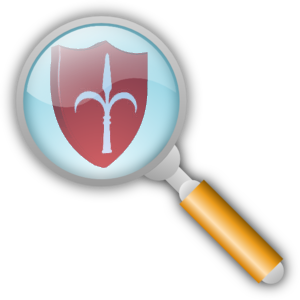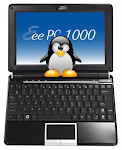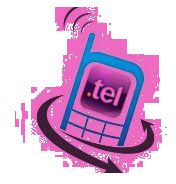skip to main |
skip to sidebar
I will give you a couple of examples of recent implementations of QR codes in Southeast Asia. The first one is of a Singapore magazine publisher using the QR code in a Lenovo ad. The idea is to engage the reader with the product in a more interactive way. This is achieved by putting a QR code inside the ad; for more photos of the model (both the person and the notebook) the reader could scan the code, which will redirect him/her to a mobile website with more interesting content. One can imagine many more examples of implementations of 2D barcodes with regards to advertising, like engaging the reader with the advertiser and publisher through lucky draws, special campaigns, etc.
Aurora was conceived in the eeebuntu project. If you prefer keeping to your guns and running with one of the original Eeebuntu Versions you can still grab the iso’s from Here.
EB 4 beta
We released a very early snapshot of the Aurora build under the name EB 4.0 beta. We will soon be replacing this with an updatedAurora 0.5 beta release once the installer has been completed. In the meantime your welcome to download the original beta iso from here or here .
Eeebuntu 3.0
Eeebuntu 3.0 was based on Ubuntu 9.04 and Debian Unstable. Build with customization to various packages and a modified kernel it provided support to the majority of netbooks available.
Eeebuntu 3.0 was available in 4 flavours and you can download the iso's here;
Standard
NBR
Base
LXDE (beta)
We are unable to provide premium support on Eeebuntu 2.0 and previous but help can still be found on our forums.
Eeebuntu 2.0
Eeebuntu 2.0 was based on Ubuntu 8.10 and the array.org kernel. It provided extended support for all eeepc model netbooks pre installed on the system
Eeebuntu 2.0 was available in 2 varieties,
Standard
NBR
Eeebuntu 1.0
Eeebuntu 1.0 was the first eeebuntu released in August 2008. Based on the Ubuntu 8.04 LTS release it provided the first attempt of preconfiguring ubuntu to work on the original 700 and 900 series eeepc's .

The Aurora Story
Past
Aurora started life originally in 2008 as the Eeebuntu project; A customized redistribution of Ubuntu; modified specifically for the Eeepc range of netbooks.
Originally a simple collection of scripts and hacks to get Ubuntu 8.04 onto an EeePC it grew into a distribution of its own
By the end of 2008 Eeebuntu had released version 2 of Eeebuntu; over the next 6 months over 400,000 downloads were achieved: Not bad since only 40,000 copies of Version 1.0 were downloaded.
In May/June 2009 the Eeebuntu team released 3.0 to great reviews across numerous review and blogsites such as Linux.com, Techrepublic and The Register.
To add to the value of Eeebuntu; support for a wide range on non-eeepc netbooks was added to the acpi and kernel.
In June 2009 after an astounding 25,000 downloads, within a week of releasing standard and NBR editions, Eeebuntu were nominated as a finalist in the Sourceforge choice awards 2009. Then in july, after being named as a Finalist, Eeebuntu won the category as "Best New Project of 2009".
In September 2009 the team announced work on Eeebuntu 4 (eb4) but the project would see a shift in support. In December we announced that, as well as a Debian base, we would be looking for Eeebuntu to be supported on all systems : laptop, netbook and desktop alike.
Present
Aurora has been designed from the ground up to be more than just an OS or Linux distribution. We are here to build a user friendly system for user, by users. Aiming to make life simple so the OS just does what the user expects it to do!
We aim to teach our users and help others using the great benefits of open-source and the community by working together to document and write tutorials to teach others, collaborate on new ideas and give the community TRUE input on the system they use.
Unity is strength... when there is teamwork and collaboration, wonderful things can be achieved.
The Future at 88 miles an hour...
We haven't been to the future (just yet) but we have ambitious plans on how we want to get there and how the end result will be. This picture can be grown and added to by everyone who wishes to join the collaboration effort of the Aurora Project.
Working together we believe that a great system can be built by those who want to use it.
If we build it they will come :D


















































